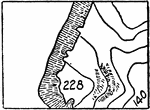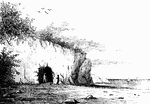Bluffs
The Bluffs ClipArt gallery offers 12 views of clips that overlook a body of water or plain.

Drury's Bluff
"Drury's Bluff, a Confederate position on the James River, near Richmond, Va. The principal Confederate…
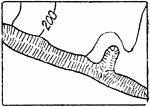
Bluffs, Other than Rocky
The typical representation of bluffs (other than rocky) on a topographical map.

Camp Dennison
"Camp Dennison, sixteen miles above Cincinnati, on the banks of the Miami River, General Cox commanding-…

Columbus, Kentucky
"General view of Columbus, Ky., and its fortications, looking down the river, showing the 'Iron Bluffs'…

Jointed Rock
This illustration shows a jointed structure. In this drawing, there are two systems of joints or divisional…
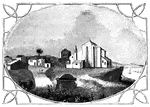
Palos
View of Palos. The pile of buildings in this view, standing upon the bluff, is the ancient Church of…
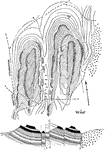
Trap Ridges
"Map and section of trap ridges near Woodbury. The topography is indicated by sketched contours, with…
